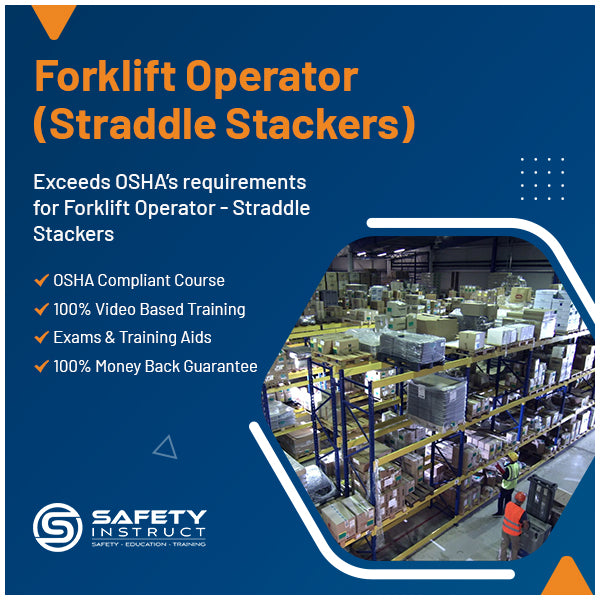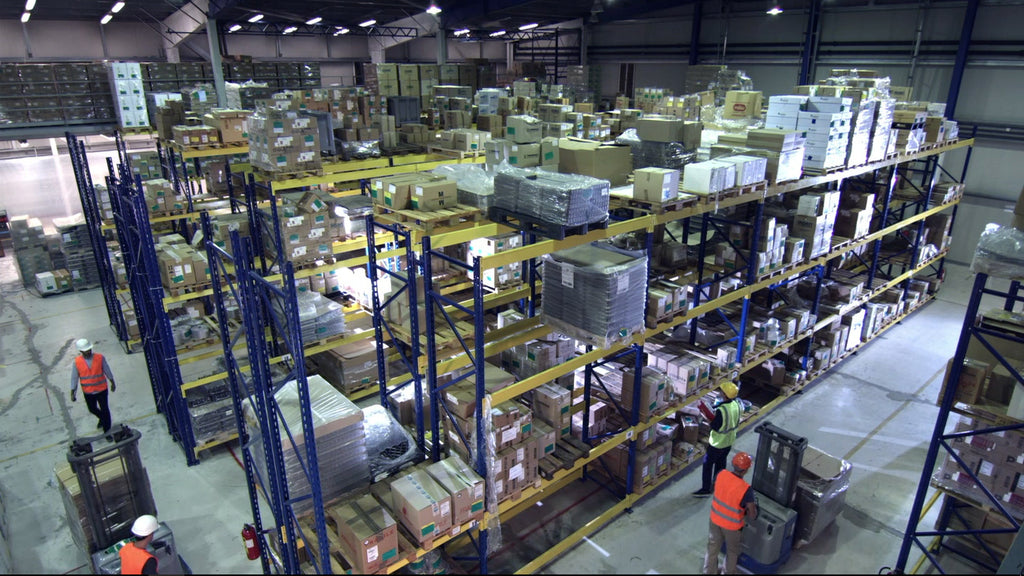No Products in the Cart
Click Here to Schedule a FREE Consultation
Phone: 866-943-6887 Email: sales@safetyinstruct.com



The forklift is one of the most common pieces of equipment in workplaces today. While commonly thought of something you drive, there is another class of forklifts specifically designed for compact warehouses and narrow spaces. These are the Electric Motor Hand Trucks, Narrow Aisle Trucks, and Hand/Rider Forklifts, and are often referred to as Straddle Stackers. These forklifts are smaller and can easily navigate tight spaces. They can also raise and lower a load above several feet. However, even though they are small, they can still be hazardous. Hazards include being run over, loads spilling, being crushed, and having the forklift tip over.
Forklift Inspection
Every forklift inspection should be thorough and complete. All aspects of the forklift should be examined, including the wheels, warning lights, movement of the forks, the lift cylinder, the handle, the mast, the protective guard, the carriage and the back rest. If any of these elements is not functioning properly, or shows signs of significant wear, you should not use the forklift. It is also important that you preform regular maintenance on the forklift to keep it working properly.
Operation & Stability
Unlike the typical forklift where you sit and drive, Straddle Stackers are designed to be either pushed or pulled through the work space. On some versions, you can stand behind the forklift and "ride along" with the forklift. The most important safety factor is understating stability and how to keep your load balanced properly on the forks. Both of these require an understanding of the Load Moment and the Stability Triangle, which refer to how the load is balanced and when it becomes off balance, causing a potential tip over or spill. Always place the heaviest part of the load closest to the back rest and carriage, to insure the weight is closest to the ballast. The farther away from the ballast it moves, the higher the likelihood of a tip over. Your forklift should contain a data plate with information on it weight capacity, be sure to consult this before adding any load.
Incident Prevention
Operating a forklift properly takes training and patience. It also takes hands-on experience with a variety of load sizes and types to fully understand how a forklift feels and responds. The more practice you have, the better you will become. Incident Prevention begins with an understanding of the load you are moving, the environment you are moving through, and how your particular forklift operates. Most forklift accidents are caused by operator error, from not paying attention, putting too much weight on the forklift, not arranging the load weight properly, and even speeding. Even though the Straddle Stacker is often pulled or pushed, it can still tip over and cause injury


